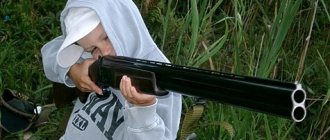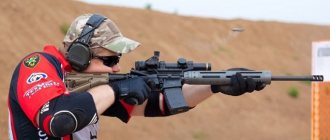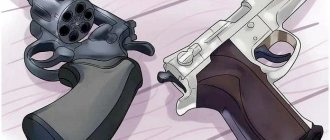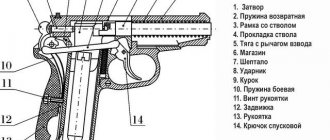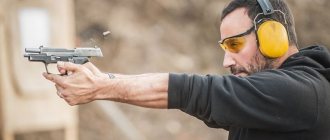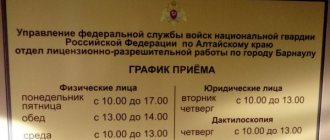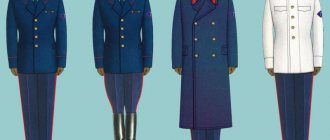HISTORY OF PRACTICAL SHOOTING
This exciting new style of shooting originated in California in the early 50's.
Within a few years, it quickly spread to other continents, including Europe, Australia, Central and South America, and Africa. The International Practical Shooting Confederation (IPSC) was officially founded at the International Pistol Sports Conference held in Columbia, Missouri in May 1976. Forty representatives from around the world were invited to participate in the Conference to determine the nature and future of Practical Shooting. Colonel Jeff Cooper served as Chairman and was elected the first President of the International Confederation of Practical Shooting.
Accuracy, Power and Speed as three equivalent elements became the focus of the Conference, along with the procedure and rules for the safe handling of weapons. The establishment of the Constitution gave birth to the Confederacy. Eight principles of Practical Shooting and a motto were developed - DVC - Diligentia, Vis, Celeritas (Latin), which means Accuracy, Power, Speed.
Today the International Practical Shooting Confederation is developing in over sixty countries (called IPSC Regions) from Argentina to Zimbabwe. Each year, elected representatives of these Regions meet at the IPSC General Assembly.
In Practical Shooting, every athlete strives to achieve the winning combination of accuracy, power and speed. In this sport, there are the following types of targets: standard paper, swinging paper (swinger), metal falling (pepper popper), metal falling plate (round or square). Competitions are held at small shooting ranges, where the shot distance rarely exceeds 45 meters, for three main types of weapons: a pistol with a caliber of 9 mm or more, a smooth-bore semi-automatic shotgun, and an assault rifle. Hitting a 15 cm Zone A from 45 meters or less may seem like an easy task for an experienced pistol shooter, but in Practical Shooting only large caliber pistols (9 mm and larger) are allowed. It is this minimum power that reflects the practical heritage of this modern sport, since wielding a large caliber weapon is much more difficult than aiming a pistol with low recoil, especially when the shooter is trying to move as quickly as possible. Time is also important. The result is determined by dividing the points by the time.
Combinations of different types of targets, such as: compound targets, moving targets, reactive targets, penalty targets that partially cover the main obstacles; the movement, tactical plan and other challenges that the course creators can come up with serve to keep the shooters on their toes and entertain the spectators.
According to IPSC rules, exercises must be practical, while at the same time variety is encouraged so that the sport does not become too formal and standard. At some competitions there is no advance information about the routines, and no one knows in advance what to expect.
Having a martial origin, this sport has changed greatly, just like karate, fencing or archery. Today, international competitions in Practical Shooting, which are based on safety and safe handling of weapons, accuracy, power and speed, are held all over the world. The highest achievement in Practical Shooting is to become an IPSC World Champion.
In 1998, Russia was admitted to the International Confederation of Practical Shooting. The first Russian Practical Shooting Championship took place in August 1999 in Nizhny Novgorod. In November 1999, the Russian team took part in the XII World Championship, held on the island of Cebu, Republic of the Philippines. The second Russian Championship took place in 2000 in Magnitogorsk
Stages of preparation in the macro cycle.
Basic training.
In the off-season, when all the big matches are far away, we do basic training. This is where it is necessary to work through everything clearly and in order, just like in a textbook, element by element. We are working on speed, experimenting with technology, weapons and equipment. Yes, by the way, it is also advisable to display any changes in weapons and equipment in the diary so that you can maintain a reporting point if you find any problems due to tuning.
Pre-competition preparation
1-2 months before major competitions it is necessary to begin pre-competition preparation. How is it different from the base? It is necessary to eliminate all your weaknesses that were identified in basic training. You don’t need champion results and numbers - just bring your weak points to a stable average level so that you don’t have problems with them at the competition. In addition to the basic elements, I recommend building small exercises with a small number of shots - from 5 to 15 rounds, so that the brain begins to rebuild to serial work. There are no naked elements at the match - there are always series, even if they are long.
Once again, during pre-competition preparation you need to bring your skills to a stable level, force your brain to shoot for alpha and drop the iron the first time. Forget about experiments with speed.
Leading up to the competition.
Eyeliner is a microcycle directly a week before the match. Here, if possible, you need to increase your range and shoot every day. This is where it’s time to build full-fledged exercises in your shooting range. You don’t have to build long exercises - it’s too much of a waste of time and ammo. Short and medium are just right. This is your rehearsal before the match. Here you can check your balance of accuracy and speed, see some global flaws in shooting tactics (excessive haste, tension or, on the contrary, relaxation, etc.). While on eyeliner, you can still force yourself to calm down and take your time. It will be too late for the match. When you find your optimal pace, you should remember it. The optimal rate of fire is approximately 90% of your maximum speed that you can show in training. It is this speed that will allow you NOT to make gross mistakes during the match.
DO NOT be tempted to “water” during a match as if it were a training session. This is indeed very tempting, but not stable - you can take a risk and show a record result, but if you are unlucky, you will slide significantly down the table. Therefore, it is better to show the result a little lower, but stable, on each exercise. It is precisely this tactic that leads to a good final result, it has been verified.
In training, you always have the right to make a mistake; you can shoot. There is no such opportunity at the match. Therefore, this state of stability must be identified before the match, and not during it. The match will be full of other worries, and in general, most often, shooters understand that everything is bad for them only after the competition, because they have no time to analyze their performance during the match.
Of course, if during your basic and preliminary training there are matches of levels 1-2, then you need to compete in them. You shouldn’t waste a lot of emotional energy on them; treat such matches as training sessions where you can identify mistakes and work on them in the future.
So, you have done everything clearly and methodically and have prepared yourself for the match. I won’t describe the intricacies of the match - you could write a whole book about this, let’s move on to the post-match analysis.
Post-competition period.
Ideally, after each exercise, you should write down your mistakes and do a short review, because at the end of the day many details will fly out of your head. But, unfortunately, there is not always time for this. Sometimes it is better to use your free time to do additional exploration of the next exercise. Moreover, under adrenaline, many mistakes are forgotten instantly and then you are surprised to find in the video that there were still shots at metal, delays on the pistol, clumsy movement, and so on.
an action camera for about four years now.
on the head. At first I was just excited to watch my playthroughs, but then I realized that this was ideal information for analysis. A camera from the side is also a good analysis tool, but in this case you can only see the moment of start, you cannot see where you are running, how the targets open, etc. At the initial stage, I did an analysis from the outside camera - I looked at how I moved, how I got into position - this is also important. But at a certain level this becomes less critical - you are already an experienced shooter and, in general, move competently through the exercise and choose the right shooting positions, and this is where you need to analyze what you see with your eyes, and this is only an action camera. Thus, I remove ALL the exercises of the match from my head and, if possible, ask that at least short and medium exercises be removed from the side, on which I can analyze the technique of movement and entering a position. As mentioned above, it is the view from the eyes that allows you to fully evaluate the shooting - the speed of transfer from target to target, the speed of aiming, the split time on a cardboard target depending on the distance, the number of additional shots on iron, the peck of the pistol, and much more. Video from 2 cameras allows me to calmly sit down at home after a match and conduct a thorough analysis of each exercise. If possible, such an analysis can be done at the end of each shooting day.
So the match is over. I analyzed all the exercises from the video and the balance of accuracy and speed from the Scoresheets. In my training diary I write down serious mistakes that really affected my results. By the way, there are not a lot of such errors - overshooting the iron, a lot of Charlies and deltas, and sometimes incorrect implementation of the game plan, which influenced the poor-quality shooting.
It's funny, I fix 1-2 dozen shortcomings from the exercises, but the analysis showed that all the exercises were merged due to haste and tension. This is what leads to additional shots at iron and loss of control on cardboard targets. If I pulled myself together and clearly worked out my game plan, even if it’s not always ideal, then, as a rule, the result is always high, even shooting at 80-90% of my real possible speed. As you can see, stability
, not speed.
Analysis of the number of “merged” and successful exercises. Marking the exercises that earn the most points per match. Gross errors (game plan, miss, aim control, etc.)
Having written out all the mistakes from the exercises, I combine them into groups - I need to highlight about 3-5 common positions that should be worked on in the next macro cycle. For example - control of hits, clearly occupying a shooting position for convenient firing at a group of targets, reloading on the move, firing at iron further than 20 meters, weapon position No. 2, 3 (extract from my diary for the Czech Republic 2015)
. Of course, you need to strive for an optimal balance of speed and accuracy (in a match 85-90% alphas, iron without finishing moves), I always remember this and therefore do not include it in the general list. Already at the match I look at the balance of each individual exercise. For example, immediately after the exercise I take Scorchite and see - 20 alphas and 2 Charlies - this is a good balance, I continue in the same spirit. Then 16 alpha and 10 charlie - this is a bad balance - something went wrong - on the next exercise you need to pay special attention to controlling the front sight. In general, all shooters, without exception, need to work on balance (Graphil also periodically smears the iron, which means there is something to work on).
Doing a detailed analysis of the match, I came to very interesting conclusions. Many shooters say, “I had 5 misses in the match, if not for them, I would have been high in the table.” HAHA! Everything is wrong))))) I analyze each leaked exercise. For example, I had a miss, but I take the result as if instead of a miss I had an alpha, that is, I add 15 points (10 for a penalty and an alpha of 5), then look at the exercise table with the results of all shooters, add these 15 points and approximately I see how many table points I lost because of this miss in this exercise. Then I look at the final table for the entire match, add these points and calculate how much percent it cost me (sounds a little complicated? In real life everything is simple))) So even in a long exercise this miss is only 1-1.5 percent!!! If this is a short exercise, then a miss is even less serious and thus, even for 5 misses in a match, you go down in the overall table by only 3-4 percent. That's not a lot.
Keep in mind that the lower your level, the longer the exercise time, which means the cost of a miss is higher. More details about this in the article about speed in PS.
Next, I count my finishing moves on the iron in each exercise. Let's say that in one exercise I did 3 finishing moves on the iron, which on average increased the time of my exercise by 2 seconds (roughly). Next, I also calculate how much it cost me in lost points. Then I add up all the exercises for the match. And lo and behold! Losing points on these mistakes is really not critical. At the last match of Assault on the Citadel 2016, I had about 25 finishes with iron in the entire match out of a possible 95. I thought, “wow, that’s a lot,” then I converted finishing moves into time, time into lost points, and points into final percentages, and it turned out to be only about 2 lost percentages, which moved me down just 1 place in the final table. Although when I watch the video and see my mistakes, it seems that I have slipped by 15 percent. Here's the real math and conclusions.
The next point due to which we lose final points is the extra Charlie deltas. I know that my optimal balance of accuracy and speed is 85-90% during an exercise, and if this figure is much lower, it means I was in a hurry, that is, this is not a technical error - it can be corrected simply with my head. In exercises like these, where Charlie collected deltas, I also count the lost points and estimate how many percent I lost in the end if I had performed as consistently as I did in other exercises. So here, too, the result is a very miniscule loss of percentage ( meaning, if there are only 2-3 such exercises out of 25 matches, and not half
).
Written in pen is a short calculation of the importance of hitting the alpha with a double shot - with a split of 0.2 seconds and hitting Alpha Charlie, the hit factor is lower than with a split of 0.3 seconds and hitting Alpha Alpha.
These errors can be classified as technical and mental. That is, either your level will not allow you to shoot accurately, or internal tension leads to such errors. A separate category includes errors in tactics (game plan), when you spend a lot of time on an exercise due to the fact that, due to lack of experience, you built an irrational game plan or simply did not have enough time to fully work out the plan in your head. But we will omit the tactical aspects for now.
Thus, for misses, iron finishes and Charlie deltas
even in the worst case, I lose only 3-4% per match (analysis of matches over the last 3 years). For example, I had 85% of the leader and IF I had shot perfectly (and this is impossible), then the maximum would have been 88-89% of the leader. And even in this super situation, I still have a whole gap of 12% to the winner of the match.
From this it follows that it is not mistakes that throw us down the table, but our real skill, the overall level of shooting. There are no miracles, the percentages shown for the match are the real level of our preparation. Yes, there are problems with weapons, with targets, with the weather, etc., but all shooters have these problems, however, we see the same ones on the podium from match to match. Therefore, there is only one problem - my (your) level of training is not yet high enough, as it might seem during training. Shooting at a competition is far from training shooting.
As you can see, analyzing your performance and preparation provides invaluable information, and if you know how to use it, it will save an incredible amount of time. Conversely, I see many shooters who shoot the same percentages year after year, and sometimes even lower than normal. If your result is stuck somewhere in the middle of the table, then you definitely need to do something, sit and look for gaps in your preparation, and not in your shooting technique, not in your hands, but in your head! I'm already tired of hearing that shooters are losing the match because they lack technique, that they run slowly, and so on. This is not why the result is low. But more on that in another article.
Post-match period.
After analyzing the match, you can proceed to the next macro cycle - working on mistakes, which again includes basic preparation and then the cycle is repeated as many times as you have major matches in the season. After the shooting season ends (usually the end of the year), we begin a new season and the cycle repeats again.
In each season there is one main match, for example, the Russian Championship or the European (World) Championship, and intermediate lead-in matches - Russian Cups, etc. where you must implement your homework and approach the main match of the season in perfect shape.
In other sports, the overall scheme is the same, but there are more cycles (this applies mainly to cyclic sports).
The importance of working on mistakes is difficult to overestimate. Analysis of the match allows you to eliminate all technical and mental problems. It often happens that an athlete, having shot a third-level match, goes to another major match the very next week. For me personally, this is an unreasonable waste of ammunition and money. I didn’t figure out my mistakes and I’m bringing the same mistakes to the next match. There is a very high probability that I will encounter the same problems and will not be able to show maximum results. Then what's the point of this trip? Shoot? Or should you still learn something new and correct past mistakes? You decide 
SAFETY REQUIREMENTS
During practical shooting training and competitions, the following conditions must be observed:
- Weapons on the shooting range must be unloaded at all times, without a magazine. The pistol is in a holster or case for transportation. Gun - in a case or with an open bolt, barrel up.
- The magazine must be located separately from the weapon (in a pouch, in a pocket, etc.) Load only at the command of the judge in the starting position before performing the exercise.
- Removing a pistol from a holster, moving a weapon from a case for transportation to a holster and back, training “idle”, cleaning and repairing a weapon can only be done in a specially designated, so-called “Safety Area”. The Security Zone is a small space with a sturdy table in front of a blank wall. The area is marked with a poster. It is prohibited to touch cartridges in the Safety Zone.
- During the exercise, the barrel of the weapon, loaded or not, must always be pointed towards the targets only.
